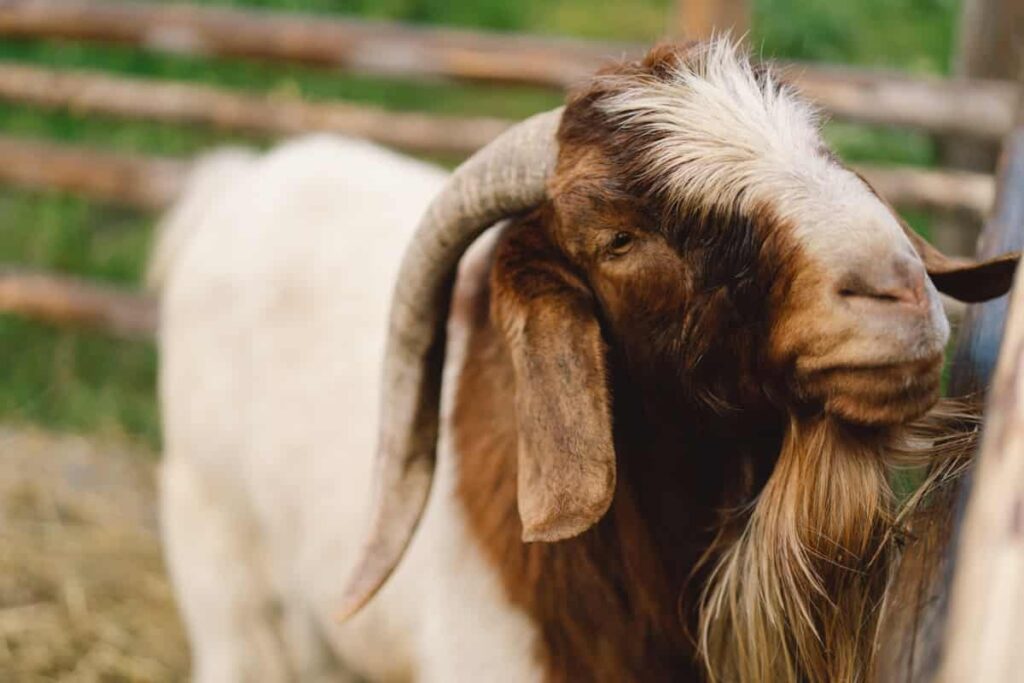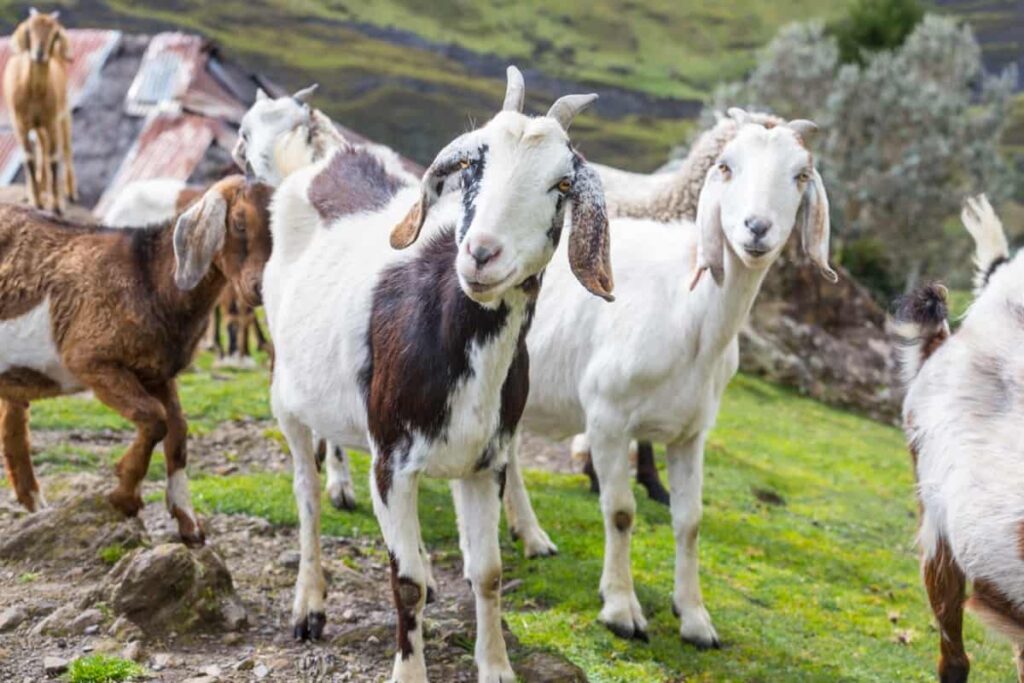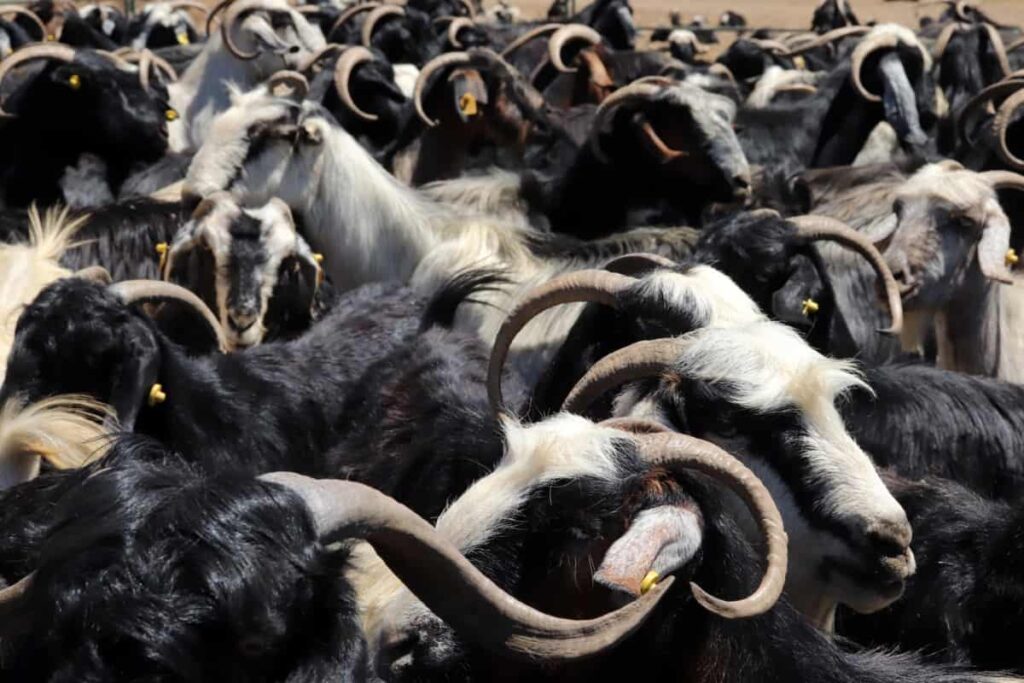Welcome to “Mastering Meat Goat Farming: Your Ultimate Guide to Success!” This comprehensive blog is your gateway to unlocking the secrets of a prosperous meat-goat farming business. Whether you’re a beginner looking to venture into this rewarding industry or an experienced farmer aiming to enhance your practices, we’ve got you covered.

Here, we’ll delve into essential tips, proven strategies, and best practices to ensure your goat farm thrives. From selecting the right goat breeds to managing their health, nutrition, and overall well-being, we’ll provide invaluable insights to help you achieve sustainable success in the competitive market.
What is Meat Goat Farming Business?
Meat Goat Farming Business involves raising goats for meat production, offering consumers a valuable source of lean, nutritious meat. Goats are efficient converters of forage into meat, making them the best choice for sustainable farming. This type of farming requires careful consideration of the goat breeds, their nutrition, and overall health management.
Successful meat goat farming also involves creating a suitable shelter and ensuring proper space for goats to thrive. Disease prevention and regular health check-ups are essential to maintain a healthy herd. With effective marketing strategies, farmers can sell their meat goat products in the market and achieve profitability.
Tips Required for Starting a Successful Meat Goat Farm
- Choose breeds well-adapted to your climate and terrain, such as Boer, Kiko, or Spanish goats.
- Provide adequate shelter and space for each goat to prevent stress and promote healthy growth.
- Offer a balanced diet of high-quality hay, grains, and essential minerals for optimal weight gain and reproduction.
- Developing a vaccination and deworming schedule and maintaining hygiene practices can reduce the risk of diseases and parasite infestations.
- Plan to breed carefully, considering age, health, and genetics to achieve desired traits and healthier offspring.
- Schedule regular health check-ups with a veterinarian to promptly detect and address any health issues.
- Practice pasture rotation to prevent overgrazing and support natural forage regeneration, promoting a healthier environment.
- Develop effective marketing strategies to promote and sell meat goat products in a competitive market.
Top Meat Goat Breeds
- Boer goats are renowned for their excellent meat quality, fast growth, and high fertility rates, making them a popular meat goat breed worldwide.
- Kiko goats are known for their hardiness and adaptability, making them ideal for meat production in diverse environments.
- Spanish goats exhibit strong disease resistance, making them ideal for challenging landscapes.
- Savanna goats are prized for their rapid weight gain and resistance to various climatic conditions.
- Myotonic goats have unique muscle stiffness but provide excellent meat quality and easy maintenance.
- Boer-Kiko crosses combine the desirable traits of Boer and Kiko goats, resulting in hardy, meaty, and adaptable offspring.
- Nubian goats are popular for dairy production but also offer tender meat. Angora goats provide mohair fiber and lean meat, making them valuable assets in sustainable farming.
- Kalahari Red goats are a South African breed known for their exceptional meat quality and adaptability to arid environments.
- Brush goats are highly efficient at clearing vegetation, making them valuable for land management and offering meat as an added benefit.
Goat Farming for Beginners
To successfully start a meat goat farming venture, conducting thorough research and educating yourself on different breeds, farming practices, and market demands is essential. Develop a comprehensive business plan outlining goals, budget, target market, and strategies. Choose suitable breeds that align with your farming objectives and are well-adapted to your climate and terrain for better productivity.
In case you missed it: Effective and Profitable Commercial Goat Farming: Key Rules to Start from Scratch, Best Milk and Meat Goat Breeds

Secure adequate land and shelter, arrange proper nutrition and feeding, establish a regular health care routine, plan breeding and reproduction carefully, implement efficient farm management practices, and develop effective marketing strategies to promote and sell your meat goat products in the competitive market. Continuous learning and adaptation are crucial to continuously improve your meat goat farming skills and adapt to changing conditions.
Meat Goat Feed and Nutrition
Meat goat farming requires a well-balanced diet to maximize profit potential. Meat goats gain slower weight and fatten less easily than cattle or sheep. To ensure profitable production, high-quality forage and browse should be used, along with the strategic use of expensive concentrate feeds. A year-round forage program allows goats to graze as much as possible throughout the year.
Goats have unique digestive systems, so providing them with a higher-quality diet is crucial due to their smaller digestive tracts. Nutrient requirements for goats include water, energy, protein, minerals, and vitamins. Forage and browse can meet these requirements, while concentrate feeds can be offered when forage lacks essential nutrients.
Feed quality and supply should be tailored to the goats’ needs, considering growth, pregnancy, lactation, and overall production. A complete goat mineral or a mix of trace mineralized salt and dicalcium phosphate can be provided free-choice to ensure proper mineral intake. Flushing, a feeding strategy to improve body condition before breeding, can enhance fertility and litter size.
Goat Farm Management Strategies for Meat Purpose
Choose suitable breeds for meat goat farming to improve productivity. Develop a balanced diet plan combining high-quality forage and concentrates for optimal growth and meat production. Provide adequate shelter, rotate grazing, and implement disease prevention routines. Plan to breed carefully, considering genetics and health to achieve desired traits in offspring.
Train staff in gentle handling techniques to minimize stress and maintain overall health. Develop efficient waste management practices to maintain a clean environment and prevent health issues. Keep detailed health, breeding, and production data records to monitor performance and make informed management decisions. Stay updated with market trends and demand to make strategic marketing and selling decisions for goat meat.
Goat Health and Care
Goat health and care include addressing common diseases like pneumonia, enterotoxemia, parasites, foot rot, and caseous lymphadenitis. Provide clean and dry shelter, vaccine goats, and avoid sudden feed changes. Deworm goats regularly, maintain dry bedding, trim hooves, and isolate infected goats. Practice good hygiene and follow regular health checks, nutrition, access to clean water, and vaccination. Observe and consult a veterinarian for timely treatment.
Farming Equipment
Meat goat farming requires proper equipment for safe and organized living conditions. Sturdy fencing, shelter, feeding troughs, water troughs, hoof trimmers, milking equipment, handling tools, and transport trailers are essential for efficiently managing and caring for goats, ensuring a successful and smooth farming operation. Proper equipment is crucial for maintaining hoof health, milking goats for dairy products, and transporting goats to markets or new grazing areas.
Profitability Analysis of Meat Goat Farming Business
The meat goat farming business can be profitable if the initial investment is calculated, operating expenses are considered, and the average selling price is $150-250 per head. Proper genetics and breeding can increase offspring quality, and market demand is researched. A well-managed meat goat farm can generate a profit margin of 15% to 30%. A 50-goat operation can generate an annual income of $7,500 to $12,500. Analyzing these factors helps assess the potential profitability of the business and make informed decisions to maximize returns.
In case you missed it: Best Meat and Milk Goat Breeds in India: Considering these Goats in Commercial Goat Farming Business

Conclusion
Mastering Meat Goat Farming provides a comprehensive and practical guide for starting and running a successful meat goat farming business. By understanding breeding, nutrition, health, and market dynamics, readers can confidently embark on their journey and achieve profitability in this rewarding industry.
- Goat Milking Practices and Equipment: A Beginner’s Guide
- Goat Farming for Fiber: Producing Mohair and Cashmere
- Maximizing Goat Milk Production: Tips for Dairy Goat Farmers
- Goat Farming as a Family Business: Strategies for Success
- Profitable Kenya Goat Breeds for Commercial Dairy and Meat Business
- Unlock the Secrets of Oberhasli Goat: Discover Raising and Management Practices
- Ultimate Guide to Myotonic Goats: Explore Profile to Raising
- Unlock the Secrets of Rove Goat: Discover Management Practices
- Ultimate Guide to Malwa Goat: Explore from Origin to Management Practices